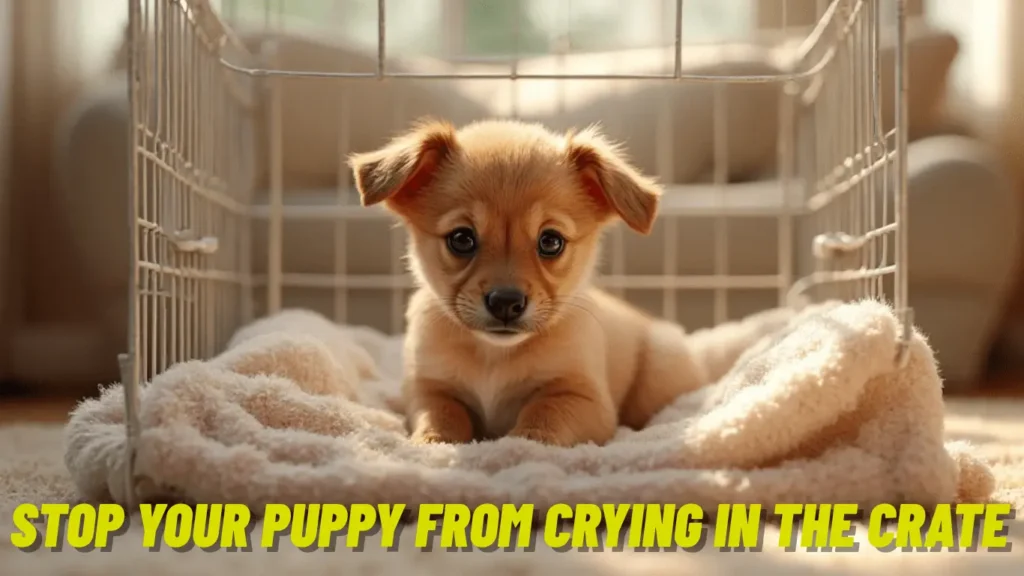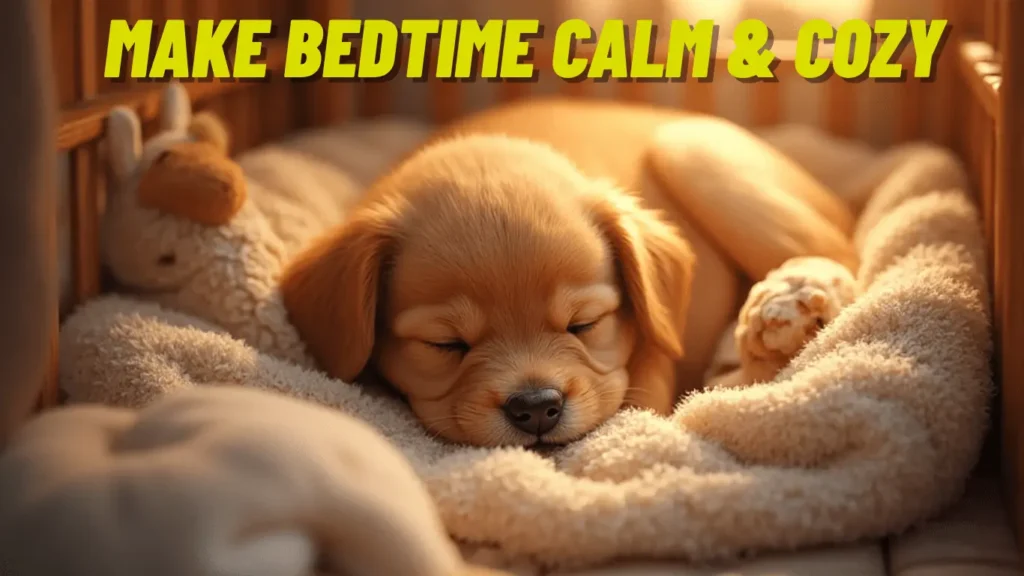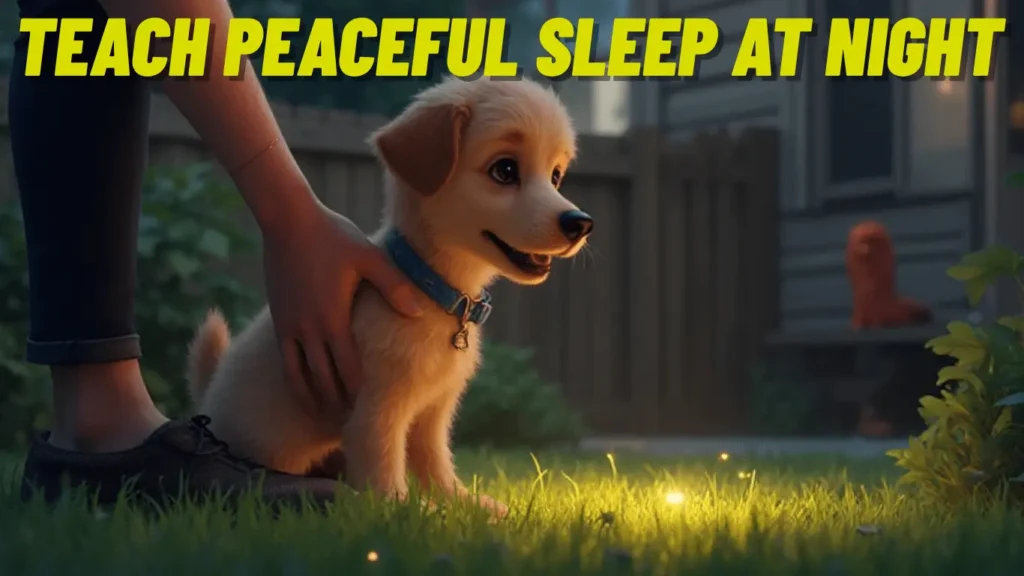How to Stop Your Puppy from Crying in the Crate at Night
Few things melt (and break) your heart faster than hearing your puppy cry from its crate in the middle of the night. For new pet parents, those little whispers can feel overwhelming—like you’re doing something wrong. But don’t worry: this behavior is completely normal during your puppy’s first weeks at home.
With time, patience and the right techniques, your puppy can learn to feel calm and comfortable in his crate – making bedtime a peaceful experience for both of you. and

🐾 Understanding Why Puppies Cry in Their Crates at Night
Separation and Natural Instincts
Your puppy has spent the first weeks of life surrounded by their littermates and their mother’s warmth. Suddenly being alone in a quiet crate can feel frightening and isolating. This behavior isn’t manipulation — it’s your puppy’s natural response to separation anxiety and unfamiliar surroundings.
According to the American Kennel Club (AKC), gradual crate training and positive reinforcement help puppies gain confidence and independence. But expect a few teary nights before full adjustment — it’s part of the learning curve.
Bathroom Break Needs
Puppies don’t have full bladder control yet. As a general rule, they can hold it for their age in months plus one hour.
So, a 2-month-old puppy usually needs a potty break every 3 hours, even overnight.
If your puppy cries at night, try a quick, quiet bathroom trip. Keep it calm — no play, no treats — just a simple potty break, then back to the crate.
Discomfort or Fear
A crate that feels cold or too big can make your puppy uneasy. Strange smells, new noises, or shadows can add to the stress.
Make sure your puppy’s crate feels more like a cozy den — not a cage. Soft bedding, a blanket with your scent, and a gentle night light can make all the difference.
🏡 Preparing the Crate for a Comfortable Night
Choose the Right Size and Location
Pick a crate that is large enough for your puppy to stand up, turn around, and lie down — but not so big that they can potty in one corner and sleep in another.
In the early days, place the crate in your bedroom or just outside your door. So your presence can provide comfort and reduce nighttime whining.
Make It Inviting
Help your puppy associate the crate with good things. Add a soft blanket, a favorite toy, or a t-shirt that smells like you. You can even feed your puppy meals inside the crate to build positive feelings toward the space.
Pro Tip: A frozen stuffed KONG or chew-safe toy can keep your puppy busy and relaxed at bedtime.

Effective Techniques to Reduce Nighttime Crate Crying
Gradual Crate Training
Start slow. First of all, leave the crate door open and let your puppy explore it freely. Toss in treats and toys to create curiosity and comfort.
Once they’re comfortable going in and out, close the door for a few minutes while you stay nearby. Gradually increase the time they spend inside — and step out of the room for short intervals.
Reward calm behavior every time the crate door opens. Over time, your puppy learns that the crate isn’t scary — it’s a safe, familiar spot for rest.
Build a Bedtime Routine
Consistency builds security. About an hour before bed, have some quiet playtime, followed by a potty break and a few cuddles. Avoid big meals or high-energy games before lights out — it’ll help your puppy settle faster.
When to Respond and When to Wait
If it’s been a few hours since the last potty trip, take your puppy out briefly.
But if you know they’re fine (fed, exercised, and comfortable), it’s okay to let them whimper for a few minutes — this teaches self-soothing.
Never ignore intense distress signs like trembling, drooling, or frantic scratching — these may signal real anxiety or discomfort.
⚠️ When to Seek Professional Help to Stop Your Puppy from Crying in the Crate
Signs of Severe Anxiety
Persistent crying, drooling, panting, or attempts to escape the crate may indicate deeper anxiety. According to Dr. Katherine Houpt from Cornell University, crate aversion often develops when training is rushed or punishment-based.
If your puppy shows these signs despite consistent training, consult your veterinarian to rule out medical issues like urinary tract infections (UTIs) or stomach discomfort.
Getting Expert Support
A certified dog trainer or canine behaviorist can help create a personalized training plan. Many professionals offer virtual sessions at affordable rates, making expert help accessible for new pet owners.

Frequently Asked Questions
Why do puppies cry in their crate at night?
They may feel lonely, scared, or need to go potty. Some also cry because their crate setup feels unfamiliar or uncomfortable.
How long should I let my puppy cry?
A few minutes is fine if their needs are met. Long, ignored crying can increase anxiety — find a balance between comfort and independence.
When do puppies stop crying at night?
Most puppies adjust within 2–4 weeks of consistent crate training, usually by 12–16 weeks of age.
Does “cry it out” cause long-term harm?
Letting your puppy fuss briefly is okay, but prolonged distress can lead to anxiety or crate avoidance later.
How do I teach my puppy to self-soothe?
Reward calm behavior, increase crate time slowly, and avoid rushing in at every whimper. Over time, your puppy learns that quiet earns attention.
🩺 When in Doubt, Talk to Your Vet
If your puppy continues crying despite consistent training and a comfortable setup, don’t hesitate to reach out to your vet. They can rule out health issues and recommend behavioral strategies to make nights peaceful again.

🐾 Final Thoughts
Every puppy cries in the crate at first — it’s part of growing up and learning independence. With patience, love, and positive reinforcement, your puppy will soon sleep soundly through the night — and so will you.
If you want to learn more about pet care and if your dog have sensitive skin you can learn about natural shampoo for dogs for sensitive skin and you can learn more about best dog dental cleaning tips at home
📅 Last Updated:
✅ Reviewed & Verified by: M. Nouman, Pet Care Researcher
📖 This article on Top 10 Dog Dental Care Tips for Healthy Teeth (2025 Guide) is regularly updated to provide expert-backed dental hygiene advice, natural cleaning methods, and vet-approved solutions for maintaining your dog’s oral health. Read the full guide here.

About the Author 📚
M. Nouman is a dedicated pet insurance researcher with over 7 years of experience helping U.S. pet parents find affordable, trusted coverage. Working closely with veterinary professionals, Nouman ensures that every article on PetCoverUSA is accurate, reliable, and backed by real data.
